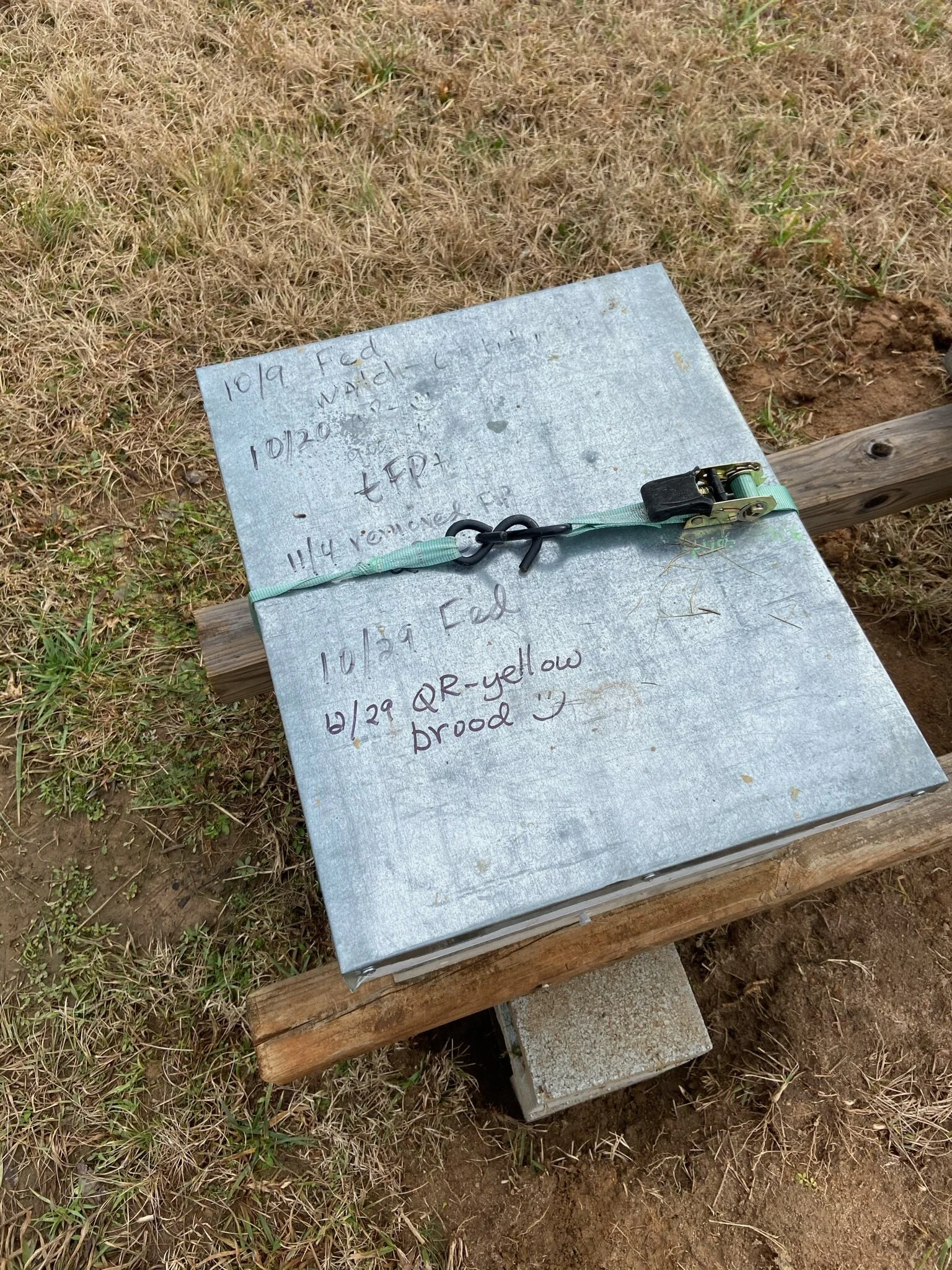Making a Plan: Keeping Records
Keeping records can be daunting, but whether you have 100 hives or 1, it’s equally as important for gaining knowledge. Depending on your goals as beekeeper and apiary size, what information you decide to record can vary greatly. Therefore, it’s important to know why your are keeping records and what records are most useful in managing your hives.
Some information you may decide to record could include:
Number of apiaries / number of hives
Apiary locations
Monthly activities
Equipment records such as cost, supplier, inventory
Hive observations/inspections
Queen status
Population
Stores
Adjustments
Feeding
Infestations
Treatments
Actions for next inspections
Queens (source, year, marked)
Harvests (honey, beeswax, pollen, propolis, queens)
Financial records
Here at BeeCo Apiaries, we have close to 100 hives and 5 bee yards so record keeping can become quit time consuming and challenging. Personally, we have found that writing information on the top hive cover (in black permanent marker) works best for quick recaps of individual hive status and the next action steps to take. We also record information about the overall bee yard in our monthly calendar, but don’t get as bogged down with the specifics of each hive. Each year, we refer back to this information to help us create a plan and strategy for the coming season.
So, now what? Take some time to think about your beekeeping goals. Keep it simple and think of it as another tool for managing your hives. If you don’t already have one, grab a blank notebook or a beekeeping specific journal to keep your records and thoughts organized. We promise, it will become a reference point for you in the future if you stay committed to tracking and recording your beekeeping efforts!
Here are a few journals, inspection sheets, and notebooks we like:
For additional information, we highly recommend this in depth article Record Keeping for Beekeepers by Melanie Howard.
Good luck and happy beekeeping!


